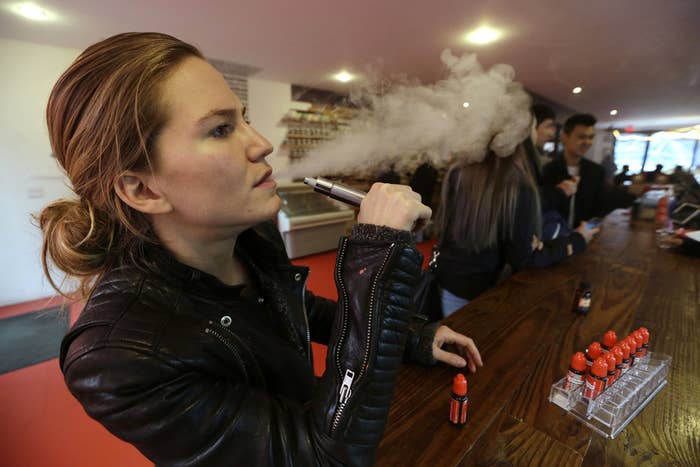
A study conducted by the New England Journal of Medicine found that e-cigarettes produced 2.5 times as much formaldehyde when compared with traditional cigarettes.
Formaldehyde is a colorless gas found in everything from building materials to embalming fluids. It's also found in cigarette smoke and e-cigarette vapor.
The formaldehyde in an e-cig forms when the propylene glycol and glycerol inside the cartridge are heated together to form vapor.
Formaldehyde can cause leukemia and nasopharyngeal cancer, the World Health Organization's International Agency for Research on Cancer has said.

While the study isn't conclusive, it does raise questions about the battery-powered vapor devices, which are being marketed as a healthier alternative to burning tobacco.
The study used syringes to draw the vapor in a simulation of the lungs, and looked at the liquid particles formed from the e-cigarettes.
Many e-cigarettes let users control the voltage of the heat and the amount of liquid, and researchers found that vaping 3 milliliters of e-cigarette liquid at a high voltage can generate 14 milligrams of formaldehyde. It would take a traditional cigarette smoker a 20-pack to receive 3 milligrams of formaldehyde.
"A lot of people make the assumption that e-cigarettes are safe and they are perfectly fine after using for a year," co-author of the study James F. Pankow, a professor of chemistry and engineering at Portland State University in Oregon, told NBC News. "The hazards of e-cigarettes, if there are any, will be seen 10 to 15 years from now when they start to appear in chronic users."
Researchers determined that the cancer risk incurred by inhaling formaldehyde could be as much as 15 times more for long-term e-cigarette users than for tobacco smokers. There are still many other toxins in cigarettes, which lead to lung and other cancers.
The e-cigarette industry dismissed the results, saying the measurements were made under conditions that do not reflect real use.
Gregory Conley of the American Vaping Association said researchers found formaldehyde only when the e-cigarettes were cranked up to their highest voltage levels, and claimed this would be hotter than a user would ever make their device.
He compared it to overcooking a steak: "I can take a steak and I can cook it on the grill for the next 18 hours, and that steak will be absolutely chock-full of carcinogens. But the steak will also be charcoal, so no one will eat it."
Pankow said no formaldehyde was found when the e-cigs were set at low voltage levels, but insisted that people use the high settings that exist on most of the devices.
Previous studies, such as one done by the journal Nicotine and Tobacco Research, have also found that formaldehyde is formed in e-cigarettes.
E-cigarettes remain unregulated by the U.S. Food and Drug Administration. In April 2014, the FDA proposed federal guidelines that would bring e-cigarettes under the same regulations as tobacco, CBS News reported. The guidelines are still under review and have no scheduled date for completion.
Vaping 3 milliliters of e-cigarette liquid at a high voltage can generate 14 milligrams of formaldehyde. An earlier version of this post misstated the e-liquid's unit of measurement.
